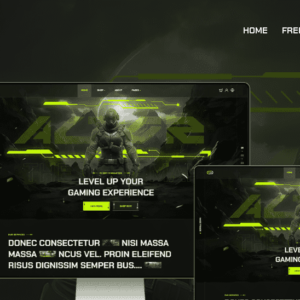
Top AI Image Generators for Healthcare in 2024
AI Image Generators for Healthcare
Introduction to AI in Healthcare
Artificial Intelligence (AI) is revolutionizing the healthcare industry, offering innovative solutions that enhance patient care and streamline medical processes. One of the most significant advancements is the use of AI Image Generators in medical imaging and diagnostics.
AI technologies are transforming healthcare by improving diagnostic accuracy, personalizing treatment plans, and predicting patient outcomes. These advancements lead to better patient care and more efficient healthcare systems.

Importance of AI Image Generators in Medical Imaging and Diagnostics : AI Image Generators play a crucial role in medical imaging by creating high-quality images that assist in accurate diagnosis. They help radiologists detect abnormalities with greater precision, reducing the likelihood of human error. Additionally, AI Image Generators can analyze vast amounts of imaging data quickly, providing faster results and enabling timely medical interventions.
By integrating AI Image Generators into healthcare, medical professionals can enhance diagnostic capabilities, leading to improved patient outcomes and more efficient healthcare delivery.
Table of Contents
What are AI Image Generators?
AI Image Generators are advanced tools that use artificial intelligence to create new images or enhance existing ones. These tools rely on complex algorithms and deep learning techniques to produce images that can be incredibly realistic and detailed.
Definition and Explanation
AI Image Generators function by analyzing large datasets of images to learn patterns, textures, and structures. This learning process allows them to generate new images or improve the quality of existing ones. The process involves several key steps:
How AI Image Generators Work
- Data Collection:
- Large Datasets: The first step is to collect large datasets of images. These datasets are often labeled with relevant information to help the AI model learn effectively.
- Diverse Sources: Images can come from various sources, including online databases, user submissions, and specialized collections. The diversity of the dataset is crucial for the model to learn a wide range of features.
- Model Training:
- Deep Learning: The AI model is trained using deep learning techniques. This involves feeding the collected images into the model and allowing it to learn from the data. Deep learning models, such as Generative Adversarial Networks (GANs) and Variational Autoencoders (VAEs), are commonly used.
- Pattern Recognition: During training, the model learns to recognize and replicate various features of the images, such as shapes, colors, and textures. This process can take a significant amount of time and computational power.
- Image Generation:
- New Images: Once trained, the model can generate entirely new images by applying the patterns and structures it has learned. For example, a GAN consists of two networks: a generator that creates images and a discriminator that evaluates them. The generator improves its output based on the feedback from the discriminator.
- Enhancement: The model can also enhance existing images by improving their quality, adding details, or making them more realistic. This can involve techniques like super-resolution, which increases the resolution of an image, or inpainting, which fills in missing parts of an image.
Applications of AI Image Generators
AI Image Generators have a wide range of applications across different fields:
- Healthcare:
- Medical Imaging: AI Image Generators can create detailed medical images, such as MRI or CT scans, which can assist doctors in diagnosing conditions more accurately.
- Drug Discovery: They can generate images of molecular structures, aiding in the discovery of new drugs.
- Surgical Planning: Enhanced images can help surgeons plan complex procedures by providing clearer views of the anatomy.
- Entertainment:
- Visual Effects: In the entertainment industry, AI Image Generators can create realistic visual effects, generate characters, and design virtual environments.
- Gaming: They can be used to create detailed game assets, such as characters, landscapes, and textures.
- Film Production: AI can generate storyboards, concept art, and even entire scenes, reducing the time and cost of production.
- Design:
- Graphic Design: Designers use these tools to create unique artwork, generate product designs, and enhance visual content.
- Fashion: AI can generate new clothing designs, patterns, and even virtual fashion shows.
- Architecture: AI Image Generators can create realistic renderings of buildings and interiors, helping architects visualize their designs.
Benefits of AI Image Generators
- Efficiency: They can produce high-quality images quickly, saving time and resources. This is particularly useful in industries where visual content is in high demand.
- Creativity: These tools enable the creation of unique and innovative designs that might be difficult to achieve manually. Artists and designers can explore new styles and concepts with the help of AI.
- Accuracy: AI Image Generators can enhance the accuracy and detail of images, making them more useful for specific applications. For example, in medical imaging, higher accuracy can lead to better diagnoses and treatment plans.
Challenges and Considerations
While AI Image Generators offer many benefits, there are also challenges and considerations to keep in mind:
- Ethical Concerns: The ability to create highly realistic images raises ethical questions, such as the potential for creating deepfakes or misleading content.
- Data Privacy: The use of large datasets often involves personal data, which must be handled with care to protect privacy.
- Bias: AI models can inherit biases present in the training data, leading to biased outputs. It’s important to ensure that datasets are diverse and representative.
By leveraging the power of artificial intelligence, AI Image Generators are transforming the way images are created and used, offering new possibilities and efficiencies in various industries.

The Evolution of AI Image Generators in Healthcare
Early Developments and Milestones
Mid-20th Century: Foundational Work In the mid-20th century, the initial focus was on creating basic algorithms that could interpret simple medical images. These early algorithms were rudimentary and primarily used for research purposes. They demonstrated that computers could be trained to recognize patterns in medical images, laying the groundwork for future advancements. For example, early work involved using statistical methods to analyze X-ray images, which was a significant step forward at the time.
1970s: Advancements in Computing and Digital Imaging
Introduction of CT and MRI Scans The 1970s were pivotal due to significant advancements in computing power and the development of digital imaging technologies. The introduction of CT (Computed Tomography) and MRI (Magnetic Resonance Imaging) scans revolutionized medical imaging. These technologies provided detailed internal views of the human body, far superior to traditional X-rays. This period marked the beginning of integrating AI into medical imaging, as the detailed images produced by CT and MRI scans required advanced algorithms for interpretation.
- CT Scans: CT scans use X-rays to create detailed cross-sectional images of the body. They are particularly useful for detecting bone fractures, tumors, and internal bleeding.
- MRI Scans: MRI scans use magnetic fields and radio waves to produce detailed images of soft tissues, such as the brain, muscles, and ligaments. They are invaluable for diagnosing conditions like brain tumors, spinal cord injuries, and multiple sclerosis.
Early 2000s: Machine Learning and Deep Learning
Emergence of Advanced Algorithms By the early 2000s, the development of machine learning and deep learning algorithms enabled AI Image Generators to analyze complex medical images with greater accuracy. Machine learning involves training algorithms on large datasets to recognize patterns and make predictions. Deep learning, a subset of machine learning, uses neural networks with multiple layers to process data in a way that mimics the human brain.
- Machine Learning: Algorithms are trained on large datasets of medical images to recognize patterns and make predictions. For example, a machine learning algorithm might be trained to identify tumors in mammograms.
- Deep Learning: Uses neural networks with multiple layers to process data. Deep learning models can automatically learn to extract features from raw data, making them particularly effective for image analysis.
AI-Driven Diagnostic Tools During this period, AI-driven diagnostic tools began to emerge. These tools could assist radiologists by highlighting potential anomalies in medical scans, such as tumors or fractures. The accuracy and efficiency of these tools improved significantly as more data became available for training the algorithms.
- Computer-Aided Detection (CAD): CAD systems use AI to analyze medical images and highlight areas that may require further investigation. For example, CAD systems are commonly used in mammography to detect breast cancer.
- Automated Image Segmentation: AI algorithms can automatically segment medical images, identifying and delineating different structures within the body. This is particularly useful in radiotherapy planning, where precise targeting of tumors is crucial.
Continuous Innovation and Improvement
Modern AI Image Generators Today, AI Image Generators are capable of producing highly detailed and accurate medical images. They can assist in early disease detection, personalized treatment plans, and even predictive analytics. For example, AI can analyze historical patient data to predict the likelihood of future health issues, allowing for proactive treatment.
- Generative Adversarial Networks (GANs): GANs are a type of AI that can generate realistic images from scratch. In healthcare, GANs are used to create synthetic medical images for training other AI algorithms, helping to overcome the challenge of limited annotated data.
- Predictive Analytics: AI can analyze historical patient data to predict the likelihood of future health issues. For example, AI algorithms can predict the risk of developing conditions like diabetes or heart disease based on a patient’s medical history and lifestyle factors.
Integration with Other Technologies Modern AI Image Generators are often integrated with other technologies, such as electronic health records (EHRs) and telemedicine platforms. This integration allows for seamless sharing of medical images and diagnostic information, improving the overall efficiency of healthcare delivery.
- Electronic Health Records (EHRs): Integration with EHRs allows AI algorithms to access a patient’s complete medical history, providing a more comprehensive analysis of medical images.
- Telemedicine: AI-powered image analysis can be integrated into telemedicine platforms, enabling remote diagnosis and consultation. This is particularly valuable in rural or underserved areas where access to specialist care may be limited.
Regulatory Approvals and Clinical Use AI Image Generators have also gained regulatory approvals for clinical use. Organizations like the FDA (Food and Drug Administration) in the United States have approved several AI-based imaging tools for use in hospitals and clinics. These approvals are based on rigorous testing and validation to ensure the safety and efficacy of the AI tools.
- FDA Approvals: The FDA has approved several AI-based imaging tools for clinical use. For example, AI algorithms for detecting diabetic retinopathy in retinal images and for identifying fractures in X-rays have received FDA clearance.
- Clinical Trials: AI-based imaging tools undergo extensive clinical trials to validate their accuracy and reliability. These trials involve comparing the performance of AI algorithms with that of human experts to ensure that the AI tools meet the required standards.
Future Prospects
Ongoing Research and Development The field of AI Image Generators is continuously evolving, with ongoing research aimed at improving the accuracy, speed, and usability of these tools. Future developments may include more advanced algorithms capable of interpreting a wider range of medical images and integrating with other AI-driven healthcare technologies.
- Explainable AI (XAI): Research is ongoing to develop AI algorithms that can explain their decision-making process. This is important for gaining the trust of healthcare professionals and ensuring that AI tools are used appropriately.
- Multimodal AI: Future AI systems may be capable of analyzing multiple types of data simultaneously, such as combining medical images with genetic information and clinical notes to provide a more comprehensive diagnosis.
Ethical and Legal Considerations As AI Image Generators become more prevalent, there are also important ethical and legal considerations to address. These include ensuring patient privacy, obtaining informed consent for AI-based diagnostics, and addressing potential biases in the algorithms.
- Patient Privacy: Ensuring that patient data is protected and used responsibly is a major concern. AI systems must comply with regulations like HIPAA (Health Insurance Portability and Accountability Act) in the United States, which sets standards for the protection of health information.
- Informed Consent: Patients must be informed about the use of AI in their diagnosis and treatment and must provide consent. This includes explaining how AI algorithms work and the potential benefits and risks.
- Algorithmic Bias: AI algorithms can sometimes exhibit biases based on the data they are trained on. It is important to ensure that AI systems are trained on diverse datasets and that their performance is regularly monitored to detect and address any biases.

Key Benefits of AI Image Generators in Healthcare
Enhanced Accuracy
AI Image Generators are pushing the boundaries of diagnostic accuracy in several innovative ways:
- Advanced Pattern Recognition: AI systems use deep learning techniques to recognize complex patterns in medical images. For example, in dermatology, AI can analyze skin lesions and differentiate between benign moles and malignant melanomas with high accuracy. This capability is based on training with thousands of images, allowing the AI to learn subtle differences that might be missed by the human eye.
- Adaptive Learning: AI systems continuously learn and adapt from new data. This means that as more images are analyzed, the AI becomes better at identifying anomalies. For instance, in mammography, AI can improve its detection rates for breast cancer by learning from each new case it encounters.
- Cross-Referencing Data: AI can cross-reference imaging data with other medical records to provide a more holistic view of a patient’s health. For example, AI can combine MRI scans with genetic data to predict the likelihood of developing certain neurological conditions, such as multiple sclerosis.
Efficiency and Speed
The efficiency and speed of AI Image Generators are transforming healthcare delivery in numerous ways:
- Batch Processing: AI can process large batches of images simultaneously, significantly reducing the time required for analysis. This capability is particularly useful in large-scale screening programs, such as those for lung cancer, where thousands of CT scans need to be reviewed quickly.
- Real-Time Monitoring: AI can provide real-time monitoring and analysis during medical procedures. For example, during endoscopic surgeries, AI can analyze live video feeds to identify abnormal tissues and guide surgeons in real-time, enhancing precision and outcomes.
- Automated Follow-Up: AI can automate follow-up procedures by flagging images that require further review or additional tests. This automation ensures that no critical findings are overlooked and that patients receive timely follow-up care.
Cost-Effectiveness
AI Image Generators contribute to cost-effectiveness in healthcare through various mechanisms:
- Scalable Solutions: AI solutions are highly scalable, meaning they can be deployed across multiple healthcare facilities with minimal additional costs. This scalability is particularly beneficial for large healthcare networks looking to standardize and improve diagnostic accuracy across all their locations.
- Reduction in Unnecessary Procedures: By providing accurate initial diagnoses, AI reduces the need for unnecessary procedures and tests. For example, accurate detection of benign tumors can prevent patients from undergoing invasive biopsies, reducing both costs and patient anxiety.
- Enhanced Resource Utilization: AI can optimize the utilization of medical imaging equipment by predicting peak usage times and scheduling maintenance during off-peak hours. This optimization ensures that equipment is available when needed and reduces downtime.
Real-World Applications
Here are some more detailed real-world applications of AI Image Generators in healthcare:
- Gastroenterology: AI is used to analyze endoscopic images to detect gastrointestinal conditions such as polyps, ulcers, and cancers. AI can enhance the detection rates of precancerous polyps during colonoscopies, leading to early intervention and prevention of colorectal cancer.
- Ophthalmology: AI is used to analyze retinal images to detect diabetic retinopathy, age-related macular degeneration, and glaucoma. AI can provide early detection and monitoring of these conditions, preventing vision loss and improving patient outcomes.
- Pulmonology: AI is used to analyze chest X-rays and CT scans to detect lung conditions such as pneumonia, tuberculosis, and lung cancer. AI can assist in the early detection of lung nodules, which can be indicative of lung cancer, allowing for timely treatment.
- Neurology: AI is used to analyze brain scans to detect conditions such as stroke, brain tumors, and neurodegenerative diseases. AI can provide detailed analysis of brain structures and identify early signs of conditions like Alzheimer’s disease, facilitating early intervention.
Future Prospects
The future of AI Image Generators in healthcare is filled with exciting possibilities:
- AI-Driven Personalized Medicine: AI will enable personalized medicine by analyzing imaging data along with genetic, lifestyle, and clinical data to provide tailored treatment plans. This approach will improve treatment efficacy and reduce adverse effects.
- Integration with Wearable Technology: AI will integrate with wearable devices to continuously monitor patients’ health and provide real-time analysis of imaging data. This integration will enable proactive healthcare management and early detection of potential health issues.
- Advanced Imaging Techniques: AI will drive the development of advanced imaging techniques, such as functional imaging and molecular imaging, providing deeper insights into disease mechanisms and treatment effects. These techniques will enhance our understanding of diseases and improve diagnostic accuracy.
- Global Health Impact: AI Image Generators will play a crucial role in global health by providing affordable and accessible diagnostic tools to low-resource settings. AI can help bridge the gap in healthcare access and improve health outcomes worldwide.
Top AI Image Generators for Healthcare in 2024
NVIDIA Clara
NVIDIA Clara is a comprehensive AI platform designed to enhance medical imaging and computational workflows. Here are some detailed aspects:
- Deep Learning Models: Clara employs sophisticated deep learning models that are trained on extensive datasets, including millions of medical images. These models can detect minute anomalies, such as early-stage tumors or micro-bleeds, which might be missed by human eyes.
- Segmentation Capabilities: Clara’s segmentation capabilities are highly advanced. It can automatically delineate various anatomical structures, such as organs, tissues, and tumors. This is particularly useful in surgical planning and radiation therapy, where precise targeting is crucial.
- Classification: Clara can classify images into different categories, such as normal or abnormal, benign or malignant. This helps in quick decision-making and prioritizing cases that need immediate attention.
- Integration with IT Systems: Clara integrates seamlessly with hospital IT systems, including PACS (Picture Archiving and Communication Systems) and EHR (Electronic Health Records). This ensures that AI-generated insights are readily available to healthcare professionals, enhancing workflow efficiency and diagnostic accuracy.
Aidoc
Aidoc focuses on providing real-time diagnostic support through AI. Here’s a closer look:
- Critical Condition Detection: Aidoc is designed to detect life-threatening conditions such as strokes, brain hemorrhages, and pulmonary embolisms. It analyzes images as soon as they are taken and alerts the medical team immediately, allowing for rapid intervention.
- Workflow Integration: Aidoc integrates with existing hospital workflows, ensuring that the alerts and findings are seamlessly incorporated into the patient’s medical records. This integration helps in maintaining a continuous and efficient workflow.
- Continuous Learning: Aidoc’s algorithms continuously learn and improve from new data, enhancing their accuracy and reliability over time. This means that the more it is used, the better it becomes at detecting critical conditions.
Viz.ai
Viz.ai is tailored for emergency medical scenarios, providing rapid analysis and alerts. Here are some key features:
- Stroke Detection: Viz.ai is particularly known for its stroke detection capabilities. It can quickly identify blockages or bleeds in the brain and alert the stroke team, significantly reducing the time to treatment. This rapid response is crucial in minimizing the damage caused by strokes.
- Cardiovascular Issues: Viz.ai also excels in detecting cardiovascular issues, providing real-time alerts to the medical team. This includes identifying conditions such as heart attacks and aortic dissections.
- Efficiency: By automating the initial analysis, Viz.ai helps in reducing the workload on radiologists and ensuring that critical cases are prioritized. This efficiency is vital in emergency situations where every second counts.
Siemens Healthineers’ AI-Rad Companion
AI-Rad Companion from Siemens Healthineers offers comprehensive support for radiologists. Here’s more detail:
- Automated Measurements: AI-Rad Companion automates routine measurements such as organ volumes and lesion sizes, which can be time-consuming if done manually. This automation allows radiologists to focus on more complex and critical tasks.
- Enhanced Interpretation: The AI-Rad Companion enhances the interpretation of images by highlighting areas of concern and suggesting possible diagnoses. This helps radiologists to make more accurate and informed decisions.
- Integration: It integrates with existing radiology workflows, ensuring that the AI insights are easily accessible to radiologists during their review process. This seamless integration helps in maintaining a smooth and efficient workflow.
Paige.AI
Paige.AI is a leader in AI-powered cancer diagnostics. Here’s a deeper look:
- Cancer Detection: Paige.AI uses advanced algorithms to detect cancerous cells in pathology slides. This is crucial for early diagnosis and treatment planning, as early detection significantly improves the chances of successful treatment.
- Algorithm Training: The algorithms are trained on a vast number of pathology images, ensuring high accuracy and reliability. This extensive training allows Paige.AI to detect even the smallest signs of cancer.
- Clinical Integration: Paige.AI integrates with pathology workflows, providing pathologists with AI-generated insights that can aid in their diagnosis. This integration helps in maintaining a continuous and efficient workflow, ensuring that the AI insights are readily available to pathologists.
These AI image generators are revolutionizing healthcare by providing faster, more accurate, and more efficient diagnostic capabilities.
NVIDIA Clara
1. High-Performance Volumetric Visualization
This feature is not just about viewing 3D images but also about interacting with them in real-time. For example, surgeons can use augmented reality (AR) to overlay 3D images onto a patient’s body during surgery, providing a precise guide for incisions and other procedures. This can significantly improve surgical outcomes by enhancing precision and reducing the risk of complications.
2. Pre-Trained AI Models
These models are continually updated and refined using new data, ensuring they remain at the cutting edge of medical imaging technology. Some specific applications include:
- Automated Tumor Detection: AI models can automatically highlight potential tumors in scans, allowing radiologists to focus on the most critical areas.
- Organ Segmentation: AI can delineate different organs in a scan, which is particularly useful in planning radiation therapy for cancer patients to ensure the radiation targets the tumor while sparing healthy tissue.
3. Scalability
The platform’s scalability also extends to cloud-based solutions. Healthcare providers can leverage cloud computing to handle large-scale data processing and storage, making it easier to manage and analyze vast amounts of medical imaging data. This is particularly beneficial for research institutions conducting large-scale studies.
4. Full-Stack Platform for Medical Device Development
NVIDIA Clara’s full-stack platform includes:
- AI-Assisted Annotation Tools: These tools help in labeling medical images, which is a crucial step in training AI models. By automating this process, the platform reduces the time and effort required for data preparation.
- Regulatory Compliance: The platform provides tools to ensure that new medical devices meet regulatory standards, which is essential for gaining approval from bodies like the FDA.
5. Accelerated Computing Power
The platform’s use of GPUs allows for parallel processing, which is particularly useful in tasks like:
- Deep Learning Model Training: Training deep learning models on large datasets can be computationally intensive. NVIDIA Clara’s GPUs can handle these tasks efficiently, reducing the time required to develop and refine AI models.
- Real-Time Diagnostics: In emergency rooms, rapid analysis of imaging data can be life-saving. For instance, in cases of traumatic brain injury, quick identification of bleeding or swelling can guide immediate treatment decisions.
6. Integration with Existing Workflows
NVIDIA Clara supports integration with various electronic health record (EHR) systems, ensuring that imaging data and analysis results can be seamlessly incorporated into a patient’s medical history. This holistic view of patient data enhances the quality of care by providing healthcare professionals with comprehensive information.
7. Support for Various Medical Fields
The platform’s versatility extends to specialized applications such as:
- Pediatric Imaging: AI models can be trained to recognize conditions specific to children, such as congenital heart defects, ensuring that young patients receive accurate diagnoses and appropriate treatments.
- Geriatric Care: For elderly patients, AI can help in monitoring chronic conditions and detecting early signs of diseases like Alzheimer’s, enabling timely interventions.
Additional Features
- Federated Learning: This approach allows institutions to collaborate on AI model training without sharing sensitive patient data. Each institution trains the model locally on its data, and only the model updates are shared. This enhances the model’s accuracy while maintaining patient privacy.
- Edge Computing: By processing data locally on devices, edge computing reduces the need for constant internet connectivity and lowers latency. This is particularly useful in remote or resource-limited settings where reliable internet access may be a challenge.
Potential Future Developments
NVIDIA Clara is continuously evolving, with potential future developments including:
- Enhanced AR/VR Capabilities: Further integration of augmented and virtual reality could provide even more immersive and interactive ways to visualize and interact with medical data.
- Personalized Medicine: AI models could be tailored to individual patients, providing personalized diagnostic and treatment recommendations based on a patient’s unique medical history and genetic profile.
Aidoc
1. Real-Time Analysis of Medical Images
Aidoc’s real-time analysis capabilities are at the core of its AI-powered diagnostic support:
- Deep Learning and Neural Networks: Aidoc employs deep learning and neural networks to analyze medical images. These technologies enable the AI to learn from vast amounts of data, improving its ability to detect abnormalities.
- Clinical Validation: The AI’s performance has been validated through numerous clinical studies, ensuring that it meets high standards of accuracy and reliability. This validation is crucial for gaining the trust of healthcare providers.
- Continuous Monitoring: The AI continuously monitors incoming medical images, providing instant feedback. This is particularly important in emergency departments where rapid decision-making can save lives.
2. Seamless Integration with Hospital Systems
Aidoc’s integration features ensure that its AI solutions fit smoothly into existing healthcare workflows:
- Compatibility with PACS and RIS: Aidoc is designed to be compatible with major Picture Archiving and Communication Systems (PACS) and Radiology Information Systems (RIS). This compatibility ensures that the AI can access and analyze medical images without disrupting existing workflows.
- User Interface: The AI’s findings are presented in a clear and intuitive user interface. Radiologists can easily review the AI’s analysis, which includes highlighted areas of concern and detailed annotations.
- Background Operation: Aidoc’s aiOS™ operates in the background, continuously evaluating exams and activating AI solutions as needed. This background operation ensures that healthcare providers can focus on patient care without being interrupted by the technology.
3. Triage and Notification
Aidoc’s triage and notification system enhances the efficiency of medical teams by prioritizing cases based on severity:

- Severity-Based Prioritization: The AI system assesses the severity of each case and prioritizes them accordingly. For example, a patient with a suspected pulmonary embolism would be flagged for immediate attention, while less urgent cases are queued accordingly.
- Real-Time Alerts: When a critical condition is detected, the system sends real-time alerts to the relevant healthcare providers. These alerts can be integrated with hospital communication tools, such as pagers and messaging systems, ensuring that the right personnel are notified promptly.
- Collaboration and Coordination: Aidoc’s platform includes tools for collaboration and coordination, allowing healthcare providers to communicate and manage critical cases more effectively. This improves overall efficiency and patient outcomes.
4. Follow-Up Management
Aidoc’s follow-up management features ensure that patients receive continuous and comprehensive care:
- Automated Follow-Up Reminders: The system generates automated reminders for follow-up appointments, helping patients stay on track with their care plans. This is particularly important for managing chronic conditions and ensuring continuity of care.
- Patient Engagement Tools: Aidoc includes features for engaging patients, such as sending educational materials and updates about their condition. This helps patients stay informed and involved in their care, improving adherence to treatment plans.
- Outcome Tracking and Analytics: The platform tracks patient outcomes over time, providing valuable data for healthcare providers. This data can be used to assess the effectiveness of treatments, identify trends, and make informed decisions about future care.
Aidoc’s AI-powered diagnostic support system offers a comprehensive suite of functionalities that enhance the capabilities of radiologists and other healthcare professionals. By providing real-time analysis, seamless integration, efficient triage, and effective follow-up management, Aidoc helps improve patient outcomes and optimize the efficiency of medical teams.
These advanced features make Aidoc an invaluable tool in modern healthcare, supporting the delivery of high-quality, timely, and continuous care.
Viz.ai
Advanced AI Algorithms and Machine Learning
Viz.ai employs cutting-edge AI algorithms and machine learning techniques to analyze medical imaging data. Here’s a deeper look into how these technologies work:
- Training on Large Datasets: The AI models are trained on extensive datasets that include millions of medical images. This training allows the algorithms to learn and recognize patterns associated with various diseases.
- Continuous Improvement: The AI models are designed to continuously learn and improve. As they process more data, they become more accurate and reliable, enhancing their diagnostic capabilities over time.
- Pattern Recognition: The algorithms excel at identifying subtle patterns and anomalies in medical images that might be missed by human eyes. This capability is crucial for early detection of diseases.
Disease Detection and Management
The platform’s ability to auto-detect diseases across multiple therapeutic areas is a significant advancement in medical technology:
- Early Detection and Intervention:
- Stroke: Early detection of strokes is critical. The platform can quickly identify signs of a stroke and alert medical teams, enabling them to administer treatment faster. This can significantly improve patient outcomes and reduce the risk of long-term disability.
- Heart Disease: Early detection of heart disease allows for timely interventions that can prevent more serious complications. The platform’s ability to analyze EKGs and other cardiac imaging data in real-time is particularly valuable.
- Comprehensive Coverage:
- Neurovascular Diseases: Viz Neuro focuses on conditions affecting the brain and blood vessels, such as strokes and aneurysms. By providing real-time analysis and alerts, it helps ensure that patients receive prompt care.
- Cardiovascular Conditions: Viz Cardio addresses heart-related issues, aiding in the diagnosis and management of conditions like heart attacks and arrhythmias.
- Vascular Diseases: Viz Vascular targets diseases affecting the blood vessels, improving the detection and treatment of conditions like deep vein thrombosis and peripheral artery disease.
- Trauma: Viz Trauma is designed to meet the needs of trauma centers, providing tools that streamline communication and improve response times in emergency situations.
- Radiology: Viz Radiology enhances the workflow for radiologists by providing tools that expedite the diagnosis and treatment process, ensuring that patients receive timely and accurate care.
Streamlined Communication and Workflow Optimization
The platform’s ability to streamline communication and optimize workflow is another significant advantage:
- Real-Time Collaboration: By providing real-time alerts and high-resolution 3D imaging, the platform enables healthcare professionals to collaborate quickly and effectively. This is particularly important in emergency situations where every second counts.
- Workflow Integration: The platform integrates seamlessly with existing hospital systems, ensuring that it fits smoothly into the workflow of medical teams. This reduces the learning curve and allows for immediate benefits.
- Decision Support: The platform provides decision support tools that help healthcare professionals make informed decisions quickly. This can lead to better patient outcomes and more efficient use of resources.
AI Image Generators
The integration of AI Image Generators into the platform enhances the accuracy and efficiency of medical imaging:
- Detailed Imaging: These generators create highly detailed and precise images, which are essential for accurate diagnosis and treatment planning. This level of detail can help healthcare providers identify issues that might be missed with less advanced imaging techniques.
- Efficiency: By automating the image generation process, the platform reduces the time and effort required to produce high-quality images. This allows healthcare professionals to focus more on patient care and less on administrative tasks.
Real-World Impact and Clinical Validation
Viz.ai’s platform has been clinically validated and has shown significant improvements in both patient and economic outcomes:
- Stroke Care: In stroke care, the platform has been proven to save critical minutes, which can be the difference between life and death. Faster diagnosis and treatment can significantly improve the chances of recovery and reduce the risk of long-term disability.
- Economic Benefits: By streamlining workflows and improving diagnostic accuracy, Viz.ai’s platform can also reduce healthcare costs. Faster and more accurate diagnoses mean fewer unnecessary tests and treatments, which can save money for both healthcare providers and patients.
Future Prospects
Looking ahead, Viz.ai is poised to continue leading the way in AI-powered medical imaging and care coordination. The company is likely to expand its platform to cover even more therapeutic areas and integrate additional advanced technologies, further enhancing its capabilities and impact on patient care.
Viz.ai is revolutionizing the medical imaging field with its AI-powered care coordination platform. By leveraging advanced algorithms, real-time analysis, and automated disease detection, the platform significantly accelerates diagnosis and treatment, enhancing patient care. Its ability to streamline communication and optimize workflow further improves patient outcomes and efficiency for healthcare professionals. With continuous advancements and clinical validation, Viz.ai is setting new standards in the medical imaging industry, making healthcare more efficient and effective.
Siemens Healthineers’ AI-Rad Companion
Advanced Features and Capabilities:
- Integration with Electronic Health Records (EHRs):
- AI-Rad Companion can integrate with electronic health records (EHRs) to provide a comprehensive view of a patient’s medical history. This integration allows radiologists to access relevant patient information, such as previous imaging studies, lab results, and clinical notes, directly within the imaging platform. This holistic view aids in making more informed diagnostic decisions.
- Personalized Imaging Protocols:
- The tool can customize imaging protocols based on patient-specific factors such as age, weight, and medical history. This personalization ensures that each patient receives the most appropriate imaging study, optimizing image quality while minimizing radiation exposure in modalities like CT.
- Continuous Learning and Improvement:
- AI-Rad Companion employs machine learning algorithms that continuously learn from new data. As more imaging studies are processed, the system becomes more accurate and efficient. This continuous improvement ensures that the tool remains at the cutting edge of medical imaging technology.
- Regulatory Compliance and Data Security:
- Siemens Healthineers ensures that AI-Rad Companion complies with international regulatory standards, such as FDA and CE certifications. Additionally, the platform employs robust data security measures to protect patient information, including encryption and secure access controls.
Clinical Use Cases and Benefits:
- Pulmonary Imaging:
- In pulmonary imaging, AI-Rad Companion can assist in detecting and quantifying lung nodules, emphysema, and other lung pathologies. This capability is particularly valuable in screening for lung cancer and monitoring chronic obstructive pulmonary disease (COPD).
- Cardiovascular Imaging:
- For cardiovascular imaging, the tool can analyze cardiac CT and MRI scans to assess heart function, detect coronary artery disease, and evaluate structural heart abnormalities. This detailed analysis supports cardiologists in planning interventions such as stent placements or surgeries.
- Musculoskeletal Imaging:
- In musculoskeletal imaging, AI-Rad Companion can help identify fractures, joint abnormalities, and soft tissue injuries. This is especially useful in sports medicine and orthopedics, where accurate imaging is crucial for treatment planning and rehabilitation.
- Neurological Imaging:
- The tool’s capabilities in neurological imaging include detecting brain tumors, stroke, and neurodegenerative diseases. By providing detailed images and quantitative measurements, AI-Rad Companion supports neurologists and neurosurgeons in diagnosing and treating complex brain conditions.
Impact on Healthcare Delivery:
- Reducing Diagnostic Errors:
- By providing consistent and accurate image analysis, AI-Rad Companion helps reduce diagnostic errors. This reliability is crucial in ensuring that patients receive the correct diagnosis and appropriate treatment, ultimately improving patient safety and outcomes.
- Supporting Remote and Underserved Areas:
- The cloud-based nature of AI-Rad Companion allows healthcare providers in remote and underserved areas to access advanced imaging tools. This accessibility helps bridge the gap in healthcare disparities, ensuring that patients in these regions receive high-quality diagnostic services.
- Enhancing Training and Education:
- AI-Rad Companion can be used as a training tool for radiology residents and medical students. By providing detailed annotations and explanations of imaging findings, the tool supports the education and development of future radiologists.
- Facilitating Research and Innovation:
- The platform’s ability to process large volumes of imaging data makes it a valuable resource for medical research. Researchers can use AI-Rad Companion to analyze imaging datasets, identify patterns, and develop new diagnostic and therapeutic approaches.
Future Directions and Innovations:
- Expansion to New Modalities:
- Siemens Healthineers is continuously working on expanding AI-Rad Companion’s capabilities to include new imaging modalities, such as ultrasound and nuclear medicine. This expansion will further enhance the tool’s versatility and clinical utility.
- Integration with Other AI Tools:
- Future developments may include integration with other AI tools and platforms, creating a comprehensive ecosystem for medical imaging and diagnostics. This integration will enable seamless data sharing and collaboration across different healthcare technologies.
- Patient-Centric Features:
- Upcoming features may focus on enhancing patient engagement and education. For example, AI-Rad Companion could provide patients with easy-to-understand explanations of their imaging results, helping them better understand their health conditions and treatment options.
Overall, Siemens Healthineers’ AI-Rad Companion is a powerful and evolving tool that is transforming medical imaging. Its advanced features, clinical benefits, and potential for future innovations make it an invaluable asset in modern healthcare.
Paige.AI
Paige.AI Overview
Paige.AI is a leader in digital pathology, using AI to revolutionize cancer diagnostics. By analyzing digitized pathology slides, Paige.AI’s technology assists pathologists in making faster and more accurate diagnoses. This innovation is crucial in the fight against cancer, as early and precise detection can significantly improve patient outcomes.
Specific Applications in Oncology
- Prostate Cancer Detection
- Paige Prostate Detect: This tool is a significant breakthrough as it is the first AI application in pathology to receive FDA approval. It works by analyzing digitized slides of prostate tissue. The AI has been trained on extensive datasets of prostate cancer images, enabling it to recognize patterns and features indicative of cancerous cells. This high precision helps pathologists identify cancerous tissues that might be missed during manual examination. The tool’s accuracy reduces the likelihood of false negatives (missing cancer) and false positives (misidentifying healthy tissue as cancerous), which are critical for effective treatment planning. By providing a second opinion, Paige Prostate Detect enhances the confidence of pathologists in their diagnoses.
- Breast Cancer Diagnosis
- Paige.AI’s platform also targets breast cancer diagnostics. The AI analyzes digitized slides of breast tissue, providing pathologists with detailed insights and automated assessments. This early detection capability is crucial because the earlier breast cancer is detected, the better the chances of successful treatment. The AI can highlight areas of concern on the slides, allowing pathologists to focus their attention on the most critical regions, thus improving diagnostic accuracy and speed. Additionally, the AI can quantify certain features, such as the size and shape of tumors, which can be important for staging the cancer and planning treatment.
- Multi-Tissue Cancer Detection
- The technology developed by Paige.AI is not limited to a single type of cancer. It can detect cancer across more than 17 different tissue types, including skin, lung, and gastrointestinal tract cancers. This versatility makes it a powerful tool in oncology, as it can be applied to various types of cancer diagnostics. The AI’s ability to handle multiple tissue types means that it can be used in diverse clinical settings, providing a comprehensive solution for cancer detection. This broad application is particularly valuable in large hospitals and cancer centers where multiple types of cancer are treated.
Advantages
- Enhanced Diagnostic Accuracy
- AI Image Generators: Paige.AI uses advanced AI image generators to create highly detailed and accurate images of tissue samples. These images are essential for precise diagnosis and treatment planning. The AI can enhance the quality of the images, making it easier for pathologists to identify subtle differences between healthy and cancerous tissues. This enhanced accuracy helps in reducing diagnostic errors, ensuring that patients receive the correct diagnosis and appropriate treatment. The AI can also provide quantitative data, such as the density of cancer cells, which can be useful for monitoring the progression of the disease.
- Efficiency in Workflow
- The automation of routine tasks by AI allows pathologists to focus on more complex and critical cases. This leads to faster turnaround times for diagnoses, which is crucial in cancer care. Quick and accurate diagnoses mean that treatment can begin sooner, potentially improving patient outcomes. By handling routine analyses, the AI frees up pathologists to concentrate on cases that require more detailed attention, thus optimizing the workflow in pathology labs. This efficiency can also reduce the workload on pathologists, helping to prevent burnout and improve job satisfaction.
- Scalability and Integration
- Paige.AI’s platform is designed to be scalable and easily integrated into existing pathology workflows. This means that hospitals and laboratories can adopt the technology without significant disruptions to their current processes. The platform’s scalability ensures that it can be used in both small and large healthcare settings, making it accessible to a wide range of institutions. This ease of integration helps in the widespread adoption of the technology, bringing its benefits to more patients. The platform can also be updated with new algorithms and features, ensuring that it remains at the cutting edge of cancer diagnostics.
- Real-Time Collaboration
- The platform facilitates real-time collaboration among healthcare professionals. This enables quick decision-making and improves the overall efficiency of cancer care. By allowing pathologists and other healthcare providers to share information and insights instantly, the platform helps in coordinating care and making informed decisions more rapidly. This real-time collaboration is particularly valuable in complex cases where multiple specialists need to work together to determine the best course of action. The platform can also support remote consultations, allowing experts from different locations to collaborate on a case.
Overall Impact
Paige.AI is revolutionizing the field of oncology with its advanced AI-powered diagnostics. By leveraging cutting-edge technology, it enhances the accuracy, efficiency, and effectiveness of cancer diagnosis and treatment. This not only improves patient outcomes but also streamlines the workflow for healthcare providers, making cancer care more efficient and effective. The technology’s ability to provide detailed, accurate, and timely information helps in making better-informed decisions, ultimately leading to better patient care.
Comparison of Top AI Image Generators
DALL-E 3
- Developer: OpenAI
- Key Features:
- High-Quality Images: DALL-E 3 can generate images with intricate details and high fidelity. This makes it suitable for applications requiring high-resolution visuals, such as digital art, advertising, and educational materials.
- Text Integration: The ability to integrate text within images is particularly useful for creating infographics, educational posters, and marketing materials where text and visuals need to be combined seamlessly.
- Accessibility: Available through ChatGPT Plus and Bing Chat, making it accessible to a broad audience, including those who may not have technical expertise.
| Pros | Cons |
|---|---|
| 🌟 Enhanced Image Quality: Produces highly detailed and realistic images, suitable for professional use in marketing, design, and more. | ✂️ Limited Editing Adjustments: Offers fewer options for post-generation editing, which might be a limitation for users needing fine-tuned control. |
| 📝 Efficient Text Integration: Can incorporate text into images seamlessly, great for creating graphics with captions or labels. | 🎲 Variable Outcomes: The quality and relevance of generated images can vary based on the complexity of the prompt, sometimes requiring multiple attempts to get the desired result. |
| 🛡️ Robust Safety Features: Includes measures to prevent the generation of harmful or inappropriate content, ensuring a safer user experience. |
Use Cases:
- Marketing Campaigns: Create high-quality visuals for advertisements, social media posts, and promotional materials.
- Educational Content: Design engaging educational posters and infographics that combine text and images.
- Creative Projects: Generate unique and imaginative artwork for digital and print media.
Midjourney
- Developer: Midjourney, Inc.
- Key Features:
- Photo Realism: Midjourney is known for its ability to produce images that are almost indistinguishable from real photographs. This makes it ideal for applications in virtual reality, product design, and architectural visualization.
- Customization: Offers extensive customization options, allowing users to adjust various parameters such as lighting, texture, and composition to achieve the desired look.
- Community Support: The strong community support provides a platform for users to share their work, get feedback, and learn from others, fostering a collaborative environment.
| Pros | Cons |
|---|---|
| 📸 Best for Photo-Realistic Results: Known for its ability to generate highly realistic images, making it suitable for professional photography and design projects. | 💰 Requires a Subscription: Access to the tool requires a paid subscription, which might be a barrier for some users. |
| 🎨 High Level of Customization: Users can fine-tune many aspects of the image generation process, offering great flexibility. | 📚 Steeper Learning Curve: May take time for new users to learn how to use all features effectively, especially those new to AI image generation. |
| 🌐 Strong Community Support: Active community for sharing creations and receiving feedback, which can be very helpful for learning and improving. |
Use Cases:
- Virtual Reality: Create realistic environments for VR applications.
- Product Design: Generate realistic product mockups for presentations and marketing.
- Architectural Visualization: Design lifelike architectural renderings for client presentations.
Stable Diffusion
- Developer: Stability AI
- Key Features:
- Open-Source: Being fully open-source, Stable Diffusion allows for extensive modifications and community-driven improvements. This makes it a favorite among developers and researchers who want to experiment and innovate.
- Customization: Provides a high degree of control over the image generation process, making it suitable for users with specific needs. For instance, you can tweak the model to generate images in a particular art style or theme.
- Integration: Easily integrates with other tools and platforms, enhancing its versatility. This makes it ideal for use in larger projects where multiple tools need to work together seamlessly.
| Pros | Cons |
|---|---|
| 🔧 Highly Customizable: Users can modify and adapt the tool to their specific needs, offering great flexibility. | 🧠 Requires Technical Knowledge: Users need some technical expertise to make the most of its capabilities, which might be a barrier for non-technical users. |
| 🌍 Open-Source Flexibility: Being open-source, it allows for community-driven improvements and adaptations, fostering innovation. | 🎲 Variable Image Quality: The quality of generated images can vary depending on the user’s input and modifications, requiring some trial and error. |
| 🔗 Easy Integration: Can be easily integrated with other tools and platforms, enhancing its utility in various workflows. |
Use Cases:
- Research and Development: Ideal for researchers and developers working on AI projects.
- Custom Solutions: Suitable for companies needing customized image generation solutions.
- Hobby Projects: Great for hobbyists interested in experimenting with AI.
Adobe Firefly
- Developer: Adobe
- Key Features:
- Design Integration: Seamlessly integrates with Adobe Creative Cloud, making it a natural choice for users already using Adobe’s suite of tools. This integration allows for a smooth workflow, from image generation to final design.
- User-Friendly: Designed with an intuitive interface, making it easy for designers to use. For example, you can quickly generate a background image and then refine it using Adobe Photoshop.
- Commercial Use: Generates commercially safe images, ensuring that the images can be used in professional and commercial projects without legal concerns.
| Pros | Cons |
|---|---|
| 🎨 Best for Design Professionals: Ideal for users already familiar with Adobe’s ecosystem, providing a seamless workflow. | 💳 Requires Adobe Subscription: Access to the tool requires an Adobe Creative Cloud subscription, which might be a barrier for some users. |
| 🖱️ Easy to Use: User-friendly interface designed for creative professionals, making it easy to learn and use. | 🔒 Limited to Adobe Ecosystem: Best utilized within Adobe’s suite of tools, which may not be ideal for all users. |
| 🛡️ Commercially Safe Images: Ensures generated images are safe for commercial use, providing peace of mind for professional projects. |
Use Cases:
- Professional Design: Ideal for professional designers working within the Adobe ecosystem.
- Branded Content: Suitable for businesses creating branded content.
- Freelance Design: Great for freelancers offering design services.
Microsoft Designer’s Image Creator
- Developer: Microsoft
- Key Features:
- Powered by DALL-E 3: Utilizes OpenAI’s advanced model, ensuring high-quality image generation.
- Free Access: Available for free with a Microsoft account, making it accessible to a wide audience.
- Quick Generation: Produces high-quality images rapidly, making it convenient for quick projects.
| Pros | Cons |
|---|---|
| 💸 Cost-Effective: Free to use with a Microsoft account, making it accessible to a wide range of users. | 🔑 Requires Microsoft Account: Users need a Microsoft account to access the tool, which might be a minor inconvenience for some. |
| ⚡ Quick and Convenient: Generates images quickly and easily, making it ideal for fast-paced projects. | 🌐 Limited to Online Use: Primarily designed for online use, which may limit offline capabilities. |
| 🖼️ High-Quality Images: Utilizes advanced AI to produce high-quality images, suitable for various applications. |
Use Cases:
- Small Business Design: Ideal for small businesses needing quick and cost-effective design solutions.
- Student Projects: Suitable for students working on academic projects.
- Personal Content: Great for individuals creating personal content for social media or other platforms.
Additional Considerations
- Ethical Use: When using AI image generators, it’s important to consider the ethical implications, such as ensuring that the generated images do not infringe on copyright or promote harmful content.
- Data Privacy: Be mindful of the data privacy policies of the platforms you use, especially if you are generating images that contain sensitive or personal information.
- Continuous Learning: AI image generation is a rapidly evolving field. Staying updated with the latest developments and improvements can help you make the most of these tools.
I hope this expanded explanation provides a comprehensive understanding of each AI image generator’s capabilities and helps you make an informed decision.
Case Studies
Real-World Applications
- Massachusetts General Hospital (MGH) and MIT Collaboration:
- Application: The AI system developed in this collaboration is designed to assist radiologists by analyzing CT scans for lung nodules. Lung nodules are small masses of tissue in the lungs that can be benign or malignant (cancerous).
- Outcome: The AI system’s 94% accuracy rate means it can correctly identify lung nodules in 94 out of 100 cases. This high level of accuracy reduces the likelihood of missed diagnoses and false positives, which can lead to unnecessary anxiety and additional tests for patients.
- Impact: By automating the initial screening process, radiologists can allocate more time to complex cases that require human expertise. This not only improves workflow efficiency but also enhances the overall quality of patient care. Additionally, early and accurate detection of lung nodules can lead to earlier intervention and better patient outcomes.
- Paige.AI in Oncology:
- Application: Paige.AI’s technology focuses on analyzing pathology slides, which are used to examine tissue samples under a microscope. This is a critical step in diagnosing cancers such as prostate and breast cancer.
- Outcome: The FDA approval of Paige Prostate Detect signifies that the AI application meets stringent regulatory standards for safety and effectiveness. The AI system can analyze digitized slides with high precision, identifying cancerous cells that might be missed by human eyes.
- Impact: The use of AI in pathology helps standardize diagnoses, reducing variability between different pathologists. This consistency is crucial for ensuring that patients receive accurate and timely diagnoses, which can significantly impact treatment decisions and outcomes. Early detection of cancer through AI-assisted analysis can lead to more effective treatment plans and improved survival rates.
Challenges and Limitations
Current Challenges
- Data Requirements:
- Challenge: AI Image Generators require large and diverse datasets to learn from. In healthcare, this means collecting a wide range of medical images, which can be challenging due to privacy concerns and the need for patient consent.
- Limitation: Inconsistent or biased data can lead to inaccurate or unreliable AI models. For example, if the training data predominantly includes images from a specific demographic, the AI might not perform well on images from other demographics. Ensuring high-quality, representative datasets is essential for the effectiveness of AI models.
- Output Quality:
- Challenge: The quality of images generated by AI can vary based on the input prompts and the training data. Small changes in the input can lead to significantly different outputs, making it difficult to achieve consistent results.
- Limitation: For non-experts, generating specific, high-quality images consistently can be challenging. This unpredictability can limit the practical applications of AI Image Generators, especially in fields where precision is critical, such as medical imaging. Continuous refinement and validation of AI models are necessary to improve output quality.
- Ethical Concerns:
- Challenge: The use of AI Image Generators raises ethical issues related to copyright infringement, data privacy, and the potential misuse of generated images. For instance, AI-generated images could be used to create deepfakes, which can have serious societal implications.
- Limitation: Ensuring ethical use and compliance with legal standards is crucial. This includes protecting patient data, respecting copyright laws, and preventing the creation of misleading or harmful images. Establishing clear guidelines and regulations for the use of AI Image Generators is essential to address these ethical concerns.
Future Trends in AI Image Generators
Emerging Technologies
- Enhanced Realism:
- Trend: Advances in machine learning and neural networks are enabling AI Image Generators to create highly realistic images. Techniques such as Generative Adversarial Networks (GANs) are particularly effective in producing lifelike visuals.
- Future Impact: More realistic visuals can enhance various applications. In healthcare, for example, realistic medical images can help doctors better understand and diagnose conditions. In entertainment, highly realistic visuals can create more immersive experiences in movies and video games. This can also benefit fields like virtual reality (VR) and augmented reality (AR), where realistic visuals are crucial for creating convincing environments.
- Personalization at Scale:
- Trend: AI will enable the creation of personalized visuals tailored to individual preferences and needs. This can be particularly useful in fields like marketing, where personalized content can improve engagement.
- Future Impact: In healthcare, personalized medical images can help in creating customized treatment plans. For example, AI can generate images that simulate the effects of different treatments on a patient’s specific condition, helping doctors choose the best course of action. In marketing, personalized visuals can enhance customer engagement by providing content that resonates with individual preferences.
- Interactive Visuals:
- Trend: Future AI Image Generators will be able to create visuals that respond to user interactions, making them more dynamic and engaging.
- Future Impact: This can revolutionize user experiences in various fields. In education, interactive visuals can make learning more engaging by allowing students to interact with the content. In healthcare, interactive medical images can help doctors and patients better understand medical conditions and treatment options, leading to more informed decisions. Interactive visuals can also enhance user experiences in gaming, virtual reality, and augmented reality applications.
These advancements highlight the potential of AI Image Generators to transform various industries by improving accuracy, personalization, and interactivity.
How to Choose the Right AI Image Generator
1. Quality of Output
- Resolution: High-resolution images are essential for professional applications. For instance, in healthcare, high-resolution images can be crucial for accurate diagnostics and research. A resolution of at least 300 DPI (dots per inch) is often required for print-quality images. 📸
- Detail: The level of detail can affect the usability of the images. For example, in architectural design, detailed images can help in visualizing intricate structures and materials. 🏛️
- Example: DALL-E 3 is renowned for its ability to generate highly detailed and realistic images, making it suitable for a wide range of professional uses, from marketing to scientific visualization. 🌟
2. Ease of Use
- User Interface: A well-designed user interface can make a significant difference. Look for features like drag-and-drop functionality, clear labeling, and intuitive navigation. These features can help users quickly learn how to use the tool without extensive training. 🖱️
- Accessibility: Tools that offer tutorials, guided tours, and help sections can be particularly useful for beginners. Additionally, some tools provide templates and presets that can simplify the image generation process. 📚
- Example: Microsoft Designer’s Image Creator is known for its straightforward and user-friendly interface, which allows users to start generating images with minimal effort. 👍
3. Customization Options
- Style Adjustments: The ability to switch between different styles (e.g., photorealistic, cartoonish, abstract) can be very useful. This flexibility allows you to create images that match the specific aesthetic requirements of your project. 🎨
- Color and Parameters: Customization options might include adjusting the color palette, adding textures, changing lighting effects, and more. These options enable you to fine-tune the images to better fit your needs. 🌈
- Example: Stability AI’s DreamStudio offers a wide range of customization options, allowing users to adjust various parameters to create unique and tailored images. 🛠️
4. Speed
- Generation Time: The speed at which an AI image generator can produce images is crucial, especially in industries where time is of the essence. For example, in advertising, quick turnaround times can be critical for meeting tight deadlines. ⏱️
- Example: Midjourney is known for its fast image generation capabilities, often producing high-quality images in just a few seconds. This speed can significantly enhance productivity and efficiency. 🚀
5. Cost
- Pricing Models: Different tools offer various pricing models. Subscription-based models might be more cost-effective for frequent users, while pay-per-use models could be better for occasional users. Some tools also offer enterprise pricing for larger organizations. 💰
- Free Versions: Many AI image generators offer free trials or limited free versions, which can be a great way to test the tool before making a financial commitment. These free versions often come with restrictions, such as watermarked images or limited usage. 🆓
- Example: Microsoft Designer’s Image Creator is free, making it an attractive option for users who need high-quality images without a significant financial investment. 💸
6. Support and Documentation
- Customer Support: Reliable customer support can help you resolve issues quickly. Look for tools that offer multiple support channels, such as email, live chat, and phone support. Some tools also provide community forums where users can share tips and solutions. 📞
- Documentation: Comprehensive documentation, including user manuals, FAQs, and video tutorials, can help you understand how to use the tool effectively. Detailed documentation can also assist in troubleshooting common problems. 📖
- Example: Tools with robust customer support and thorough documentation can save you time and frustration, ensuring a smoother user experience. 🛡️
Conclusion
Summary of Key Points:
- Quality of Output: High-resolution and detailed images are crucial. 📸
- Ease of Use: User-friendly interfaces are essential. 👍
- Customization Options: Flexibility in style and parameters is important. 🎨
- Speed: Faster generation times improve efficiency. 🚀
- Cost: Consider various pricing models. 💰
- Support and Documentation: Reliable support and thorough documentation are necessary. 🛡️
Recap of the Benefits and Top Tools: AI image generators offer numerous benefits, including the ability to quickly produce high-quality images tailored to specific needs. Some top tools in the market include DALL-E 3, Midjourney, and Stable Diffusion²⁷. These tools are known for their quality, ease of use, and customization options. 🌟
Frequently Asked Questions (FAQs)
What are the best AI Image Generators available?
Some of the best AI image generators include DALL-E 3, Midjourney, and Stable Diffusion²⁷. These tools are praised for their high-quality output and user-friendly interfaces. 🌟
Can AI Image Generators be used for commercial purposes?
Yes, many AI image generators allow for commercial use of the generated images. However, it’s important to check the specific terms and conditions of each tool. 📜
What are the best AI Image Generators available?
Some of the best AI image generators include DALL-E 3, Midjourney, and Stable Diffusion²⁷. These tools are praised for their high-quality output and user-friendly interfaces. 🌟
I need Services with …
- Wordpress Service
- Shopify Service
- Youtube Service
- Cv and resume Service
- Linkedin Service
Latest Post
-
Top Daily Taste WordPress Theme: Best Choice for Your Site
$ 15Original price was: $ 15.$ 13Current price is: $ 13. Add to cartAdd to WishlistAdd to Wishlist -

Get Hostinger’s Low-Cost Hosting Now!
Don’t miss out on affordable hosting with Hostinger – click now to bring your website online at an unbeatable price!










